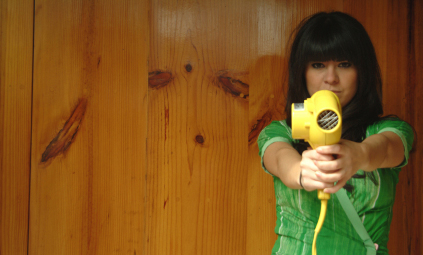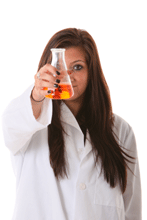Keratin Treatments Potential Risks And Side Effects
You may or may not have noticed a lot of hoopla out there about the potential risks and side effects of keratin treatments.
Some of the TV reports would have you believe that you your head might explode if you receive some of the popular keratin treatments. On the other hand, some of the manufacturers would have you believe that their treatments are purer than mother's milk. As usual, the truth is probably somewhere in between.
We'll do our best to sort through all of the conflicting information out there, without forcing you to go back to graduate school and study molecular biology.
As outlined on the "What Are Keratin Treatments" page, most keratin treatments contain a mixture of liquid keratin and some form of preservative. Keratin is a natural protein already part of your hair, and as part of the treatment, it gives hair that healthy shine. The preservative is required to bind the keratin and produce the straightening effect. Without the preservative, the straightening would not be as effective or last as long. In general, the more preservative is used, the stronger the straightening effect.
Originally, many keratin treatments used formaldehyde as the preservative element. It is not illegal in the U.S. to use formaldehyde in cosmetic products. However, formaldehyde exposure at high levels can cause symptoms such as asthma, skin reactions, eye and throat irritations, headaches, coughing and runny nose. Formaldehyde is also considered a carcinogen.
Formaldehyde releases slowly from keratin treatments when in liquid form at room temperature. One of the final steps in applying keratin treatments, however, is the use of a flat iron to seal in the product. The flat iron heats the formaldehyde, causing it to vaporize. This vapor can then be inhaled by those around it. This stage in the process is when most of those reporting symptoms have experienced them.
Many keratin treatments are marketed as "formaldehyde free". However, in order for the straightening to work and stay in the hair for a prolonged period, some form of preservative or formaldehyde derivative needs to be used. While these derivatives are not technically formaldehyde at room temperature, when heated they can change into formaldehyde. The U.S. Environmental Protection Agency considers formalin, formic aldehyde, glycol, methanal, methylene, methylene oxide, oxomethane, oxymethylene and paraform all to be "synonyms" of formaldehyde. Keratin treatments without any form of preservative should simply disappear after each wash.
So, what's the bottom line?
If you are trying to live a chemical free life, you will be best served to avoid the hair salon altogether. It should be no shock to anyone who has spent more than a few minutes in a hair salon that there are chemicals in the air. Keratin treatments are by no means the only beauty products that contain chemicals that may not be good for you, if exposed to you at significant levels. You will want to avoid the nail salon and auto mechanic as well. Further, formaldehyde is also used in manufacturing wrinkle proof fabrics, latex paints, plastics, and other cosmetics. Glue, fingernail products, plywood, and paint primers also can give off formaldehyde vapors.
So as a client who may only get two or three keratin treatments per year, it's up to you to make the decision. As with anything else, if you notice any irritation or potential side effects, you should stop any keratin treatment and see a physician.
For salon professionals, however, the risks of prolonged exposure are greatly increased. Some of the steps salon owners are taking to minimize any impacts include:
- conducting air monitoring in order to determine the level of exposure for salon workers
- requiring the use of gloves when handling solutions
- ensuring that areas where keratin treatments (and other types of treatments as well) are performed are well ventilated
- creating designated rooms with advanced air filtration and ventilation
- checking their facilities' HVAC filter to ensure that it is capable of removing chemical vapors
even scientists can have smooth shiny hair
You may have heard news reports about certain keratin treatments and some of the potential risks and side effects.
While chemical treatments at the hair salon are nothing new, consumers should be aware of what may be in the products that they use.
While keratin is a natural part of your body, other ingredients may also be used in order to provide the long lasting straightening of the hair.
We'll try to sort out the situation so that you can make the best choice for yourself.
(c) 2012 keratin-treatments.com


